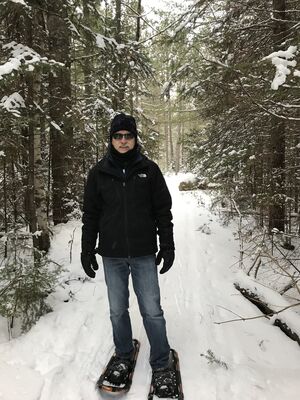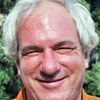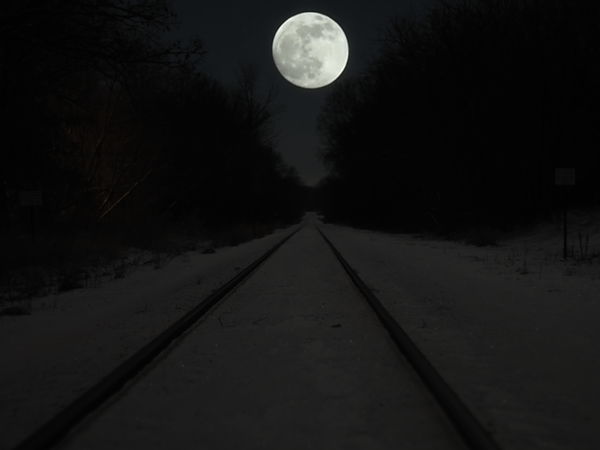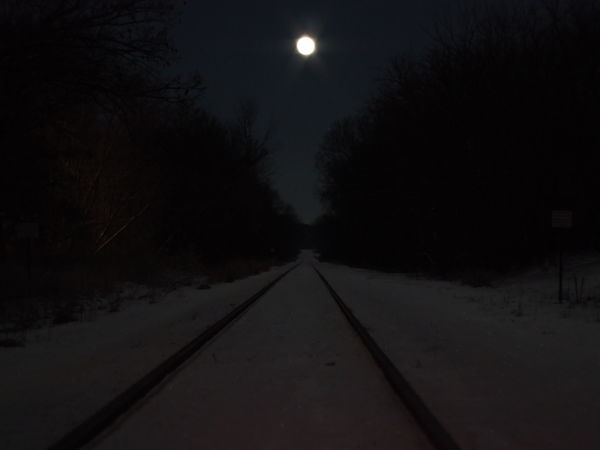Post Mortem Advice for Next Time
Nov 6, 2020 16:34:25 #
captivecookie
Loc: Washington state
Good luck with figuring out this mystery. Maybe look on local maps for a more natural alignment of tracks and moon.
Nov 6, 2020 17:55:45 #
Xmsmn wrote:
If you have a smart phone, there's an app for that ... Or find a similar set of tracks on a better compass heading for moonrise.
Mark
Mark
 If not, use websites such as timeanddate.com.
If not, use websites such as timeanddate.com. The moon significantly changes location as well as time of rising and setting each night and month. Many who aren't familiar with moon photography think of it as being in the same place in the sky at the same time (similar to the sun). Ain't true!
At latitude 46.6, I have photographed full moonrise to the northwest in winter and northeast in spring. This year I photographed full moonset to the southwest in May and slightly to the northeast on Nov. 1. Usually what's more important to me than location is the time: synching the moonrise with sunset or moonset with sunrise so that I'm not dealing with dynamic range issues.
Here's November 1st: a bit boring location, but gives you the idea re timing with sunrise behind me.
.
ISO 400, 1/750th second (no tripod and I'm wobbly), f/9.5 at 264 mm on M4/3 camera. Shot in raw, edited.
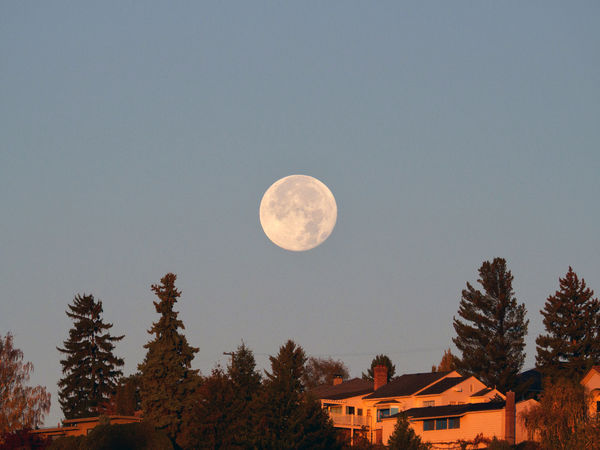
(Download)
Nov 6, 2020 18:55:33 #
Linda From Maine wrote:
If you have a smart phone, there's an app for that... (show quote)
Thanks Linda. Yeah, there’s an app for sure. I wasn’t ready to go full Photopills bit I was aware of the changes in moon position and found some data via google for our area. Kinda like the the old carpenter’s adage about measure twice cut once. I knew that the tracks were on a 78-80 deg heading, and google told me moonrise was at 66 deg. I forgot to allow for the trees and by the time the moon was was in position 90 minutes later, well, you saw the result. Thanks for your sage advice.
Mark
Nov 22, 2020 12:05:28 #
Not helpful to you, but I really like it as is. Very noir without looking affected.
Dec 13, 2020 21:46:36 #
No one mentioned exposure compensation. In my camera, I move the compensation down a bit (it takes some trying) until the exposure of the moon is right. I agree that two shots could be done, one for the moon and another for the tracks. I doubt that you would want to merge them in your camera as you have more control in PhotoShop or PSE. Good luck. It takes a little bit of playing around to capture the moon. Remember the moon is reflecting the sun and is quite bright when full or nearly full.
Dec 13, 2020 22:13:21 #
Flyerace wrote:
No one mentioned exposure compensation.
EC is merely a quick way to change f-stop, ss, or ISO depending on how you have it set up.
Dec 17, 2020 19:11:21 #
Dec 26, 2020 21:13:48 #
Xmsmn wrote:
Thanks for your comments. I looked up the data on a more successful full moon image from last winter and turns out the settings were dang close to those. Iso 250, f8, 1/250. Quite bright but would have worked here. Gotta link my memory with my fingers...
For me, that's the tough thing. I go afield and forget stuff.
Dec 28, 2020 11:12:19 #
Powergroove75
Loc: Coeur d'Alene, ID
Personally... I'd have stopped it down as far as I could go (F16 ish) , ISO 100, and see what you got with longer exposures... 30 seconds or more at least. Can always bring exposure of moon down in lightroom.
I also like really early morning right before the sun comes up... Just a slight bit of light in the sky. But if you're trying for that moon in a certain spot that's not so easy I guess lol.
I also like really early morning right before the sun comes up... Just a slight bit of light in the sky. But if you're trying for that moon in a certain spot that's not so easy I guess lol.
Dec 28, 2020 12:21:14 #
Thanks all for your comments and suggestions in the interim between moons. I'm primed to try again this time but the cloud forecast isn't very encouraging...nor is the single-digit temperature forecast. Temps I can deal with, clouds notsomuch. There's always next month...
Mark
Mark
Dec 30, 2020 12:41:09 #
Linda From Maine wrote:
If you have a smart phone, there's an app for that... (show quote)
The relationship of Earth to Moon changes in a predictable pattern over a 19 year cycle. That is why tidal benchmarks were historically set based on average high tide over said 19 year period. Now they're set using GPS. Way too complicated to get into here. I'm just confirming that the moon is never in the same place at the same time every month. Its position is constantly changing.
Dec 30, 2020 13:47:10 #
10MPlayer wrote:
The relationship of Earth to Moon changes in a predictable pattern over a 19 year cycle. That is why tidal benchmarks were historically set based on average high tide over said 19 year period. Now they're set using GPS. Way too complicated to get into here. I'm just confirming that the moon is never in the same place at the same time every month. Its position is constantly changing.
Even within a 2 day period. My efforts this month were semi-successful except that I underestimated the angle of view above the horizon so I had to assemble a composite in PP (sample 1 attached). The moon is a bit overstated (!) but I learned from the experience. Sample 2 was composited in-camera with multiple exposures. Tonight if the clouds part I'll try again with a wide-angle lens since the angle of view is less and I might be able to play with exposure.
Dec 30, 2020 15:10:43 #
Powergroove75
Loc: Coeur d'Alene, ID
Definitely like the larger moon. Just needs some brightening up so you can see down the tracks more. 👍
Jan 2, 2021 13:06:22 #
The idea is good.
Long exposure is bad. (see all the burnt pixels in there?)
You could have taken three shots... On a tripod
- Expose for the moon to have a well-defined image of it.
- w/o changing the composition take a longer exposure than the moon's or crank up the ISO.
- Use a flash and walk along the sides of the railroad tracks on a very long exposure (low ISO) to create a weird light/dark effect. Eliminate the dead pixels in PP.
Use 1 & 2 to create what you wanted to do (masking/blend if)
Use 1 & 3 to create a stand out image (masking/blend if)
Use all exposure.
Just remember to shoot raw when trying new ideas, especially in cases like this.
Long exposure is bad. (see all the burnt pixels in there?)
You could have taken three shots... On a tripod
- Expose for the moon to have a well-defined image of it.
- w/o changing the composition take a longer exposure than the moon's or crank up the ISO.
- Use a flash and walk along the sides of the railroad tracks on a very long exposure (low ISO) to create a weird light/dark effect. Eliminate the dead pixels in PP.
Use 1 & 2 to create what you wanted to do (masking/blend if)
Use 1 & 3 to create a stand out image (masking/blend if)
Use all exposure.
Just remember to shoot raw when trying new ideas, especially in cases like this.
Jan 2, 2021 13:22:12 #
Rongnongno wrote:
The idea is good. br br Long exposure is bad. (s... (show quote)
Thanks for the ideas. The most recent shots were done on a tripod with 12 second delay to eliminate shutterfinger-induced vibration. For now I shoot Raw+jpeg, any pp is done to raw images. In the trash bin are several images where I experimented with longer exposure and/or higher ISO. My desire for experimentation diminished as the temperature went down; it was 10 deg. plus a light breeze by the time I threw in the (frozen) towel. Actually the only things that froze were my thumb and index finger, the rest of my body was well-layered up.
Planning for the next full moon....
Mark
If you want to reply, then register here. Registration is free and your account is created instantly, so you can post right away.

